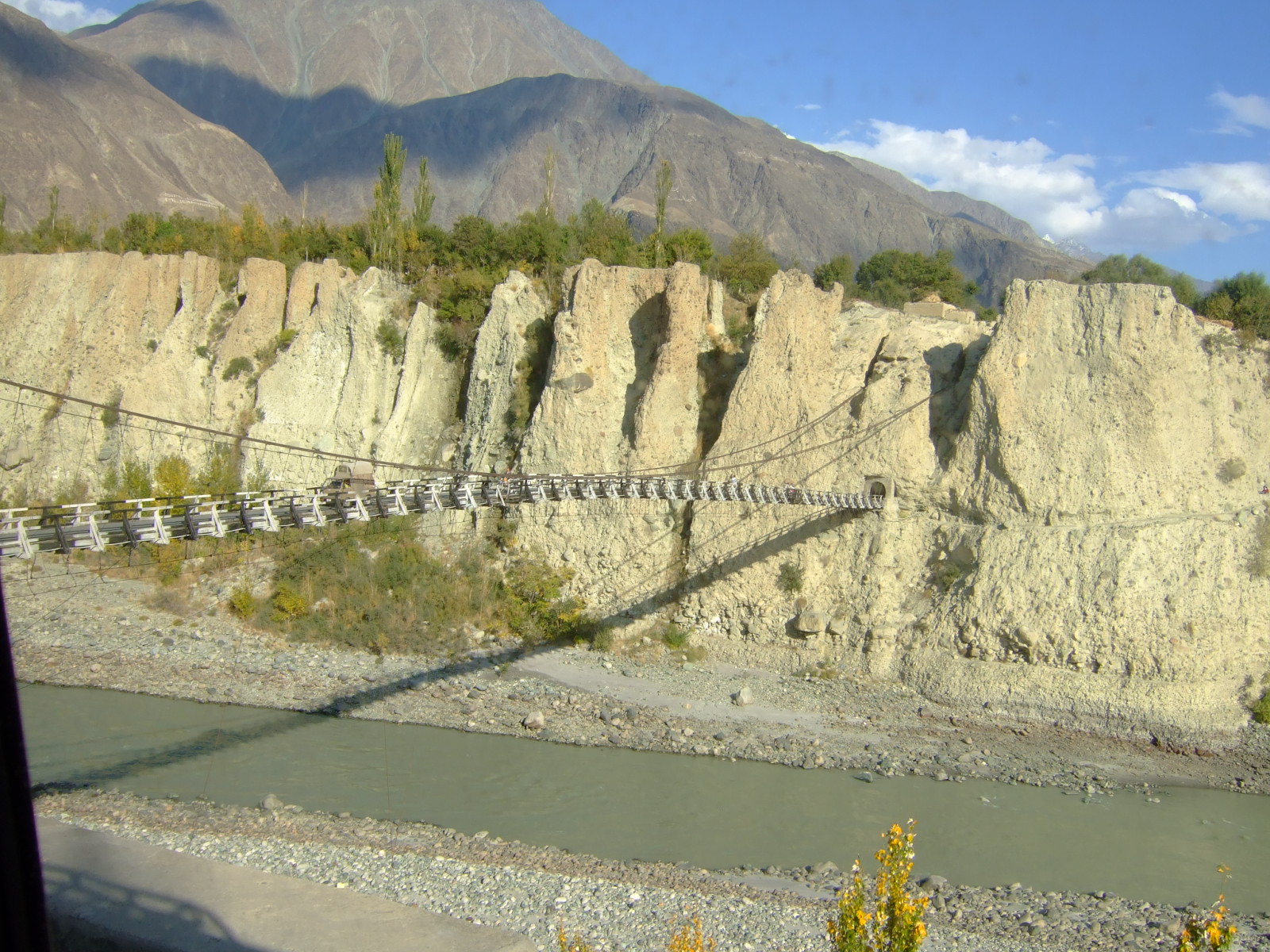|
Nomal Valley
Nomal ( Shina, ur, ) is a small valley located at a distance of 25 km north of Gilgit city in the Gilgit District, in northern Pakistan. The valley is also connected with Nalter Bala and Nalter Pain through a metaled road. Shina and Brushaski are spoken by the people and all inhabitants of the valley are adherents of Islam. Geography Since the times of Rajas (in Shina means ''Rahs'') the valley is divided into ''mohallah''s or sectors. The mohallahs are: Sigal, Majini, Jigot, Batot, Kamalabad, Ishphis, Momin Abad, Sadaruddinabad, Das and Khaltarot. The Nalter River flows through the northern end of the valley, which also supplies water to the entire valley, the river eventually merges with the Hunza River. Sir Aurel Stein, a British archaeologist and explorer says about Nomal in his travelogue:"The first march of eighteen miles was to Nomal, a green oasis in the other barren valley of the river which comes from Hunza." A concrete bridge connects the valley to the Ka ... [...More Info...] [...Related Items...] OR: [Wikipedia] [Google] [Baidu] |
Karakoram Highway
The Karakoram Highway ( ur, , translit=śāhirāh qarāquram; known by its initials KKH, also known as N-35 or National Highway 35 ( ur, ) or the China-Pakistan Friendship Highway) is a national highway which extends from Hasan Abdal in the Punjab province of Pakistan to the Khunjerab Pass in Gilgit-Baltistan, where it crosses into China and becomes China National Highway 314. The highway connects the Pakistani provinces of Punjab and Khyber Pakhtunkhwa plus Gilgit-Baltistan with China's Xinjiang Uyghur Autonomous Region. The highway is a popular tourist attraction and is one of the highest paved roads in the world, passing through the Karakoram mountain range, at at maximum elevation of near Khunjerab Pass. Due to its high elevation and the difficult conditions under which it was constructed, it is often referred to as the Eighth Wonder of the World. The highway is also a part of the Asian Highway AH4. History The Karakoram Highway, also known as the Friendship ... [...More Info...] [...Related Items...] OR: [Wikipedia] [Google] [Baidu] |
Raja
''Raja'' (; from , IAST ') is a royal title used for South Asian monarchs. The title is equivalent to king or princely ruler in South Asia and Southeast Asia. The title has a long history in South Asia and Southeast Asia, being attested from the Rigveda, where a ' is a ruler, see for example the ', the "Battle of Ten Kings". Raja-ruled Indian states While most of the Indian salute states (those granted a gun salute by the British Crown) were ruled by a Maharaja (or variation; some promoted from an earlier Raja- or equivalent style), even exclusively from 13 guns up, a number had Rajas: ; Hereditary salutes of 11-guns : * the Raja of Pindrawal * the Raja of Morni * the Raja of Rajouri * the Raja of Ali Rajpur * the Raja of Bilaspur * the Raja of Chamba * the Raja of Faridkot * the Raja of Jhabua * the Raja of Mandi * the Raja of Manipur * the Raja of Narsinghgarh * the Raja of Pudukkottai * the Raja of Rajgarh * the Raja of Sangli * the Raja of Sailana * the Raj ... [...More Info...] [...Related Items...] OR: [Wikipedia] [Google] [Baidu] |
Danyor
''Dayyor'' , native_name_lang = ur , other_name = , nickname = , image_skyline = File:Bridge Danyor.jpg , settlement_type = City , image_caption = Danyor is the location of the Danyor Suspension Bridge , pushpin_map = Gilgit Baltistan#Pakistan , pushpin_map_caption = Location in Gilgit-Baltistan , subdivision_type = Country , subdivision_name = Pakistan , subdivision_type1 = Autonomous state , subdivision_name1 = Gilgit-Baltistan , subdivision_type3 = District , subdivision_name3 = Gilgit , coordinates = , elevation_m = 2000 , population_as_of = , population_total = 25,000 , population_demonym = Bagoreh, Brusho , population_footnotes = , p ... [...More Info...] [...Related Items...] OR: [Wikipedia] [Google] [Baidu] |
Gilgit
Gilgit (; Shina: ; ur, ) is the capital city of Gilgit–Baltistan, Pakistan. The city is located in a broad valley near the confluence of the Gilgit River and the Hunza River. It is a major tourist destination in Pakistan, serving as a hub for trekking and mountaineering expeditions in the Karakoram mountain range. Gilgit was once a major centre for Buddhism; it was an important stop on the ancient Silk Road, and today serves as a major junction along the Karakoram Highway with road connections to China as well as the Pakistani cities of Skardu, Chitral, Peshawar, and Islamabad. Currently, it serves as a frontier station for the local tribal areas. The city's economic activity is mainly focused on agriculture, with wheat, maize, and barley as the mainly-produced crops. Etymology The city's ancient name was ''Sargin'', later to be known as ''Gilit'', and it is still referred to as ''Gilit'' or ''Sargin-Gilit'' by the local people. The native Khowar and Wakhi-speaking ... [...More Info...] [...Related Items...] OR: [Wikipedia] [Google] [Baidu] |
Jagot Colony
Jagot or Jagot colony is a small settlement in Gilgit District, Gilgit district near the Karakoram Highway (previously the Silk Road). It is located a mile from the Jutal, Jutal village. The settlement was formed by the migrant families, who were persecuted in their native village by majority sect in 1988 Gilgit Massacre, 1988 sectarian violence in Gilgit District, Gilgit. Places nearby * Jutal * Nomal Valley, Nomal * Gujar Das References Populated places in Gilgit District {{GilgitBaltistan-geo-stub ... [...More Info...] [...Related Items...] OR: [Wikipedia] [Google] [Baidu] |
Jutal
Jutal (Urdu, Burushiski, Shina: ) is a village in the district Gilgit at a distance of 30km from Gilgit city. The world's highest paved road, KKH, passes through the village. In the south of the village is a small settlement, formed by migrant families affected during sectarian tension of 1988, called Jagot colony Jagot or Jagot colony is a small settlement in Gilgit District, Gilgit district near the Karakoram Highway (previously the Silk Road). It is located a mile from the Jutal, Jutal village. The settlement was formed by the migrant families, who were .... See also * Gilgit City * Nomal References Populated places in Gilgit District {{GilgitBaltistan-geo-stub ... [...More Info...] [...Related Items...] OR: [Wikipedia] [Google] [Baidu] |
Sir Aurel Stein
Sir Marc Aurel Stein, ( hu, Stein Márk Aurél; 26 November 1862 – 26 October 1943) was a Hungarian-born British archaeologist, primarily known for his explorations and archaeological discoveries in Central Asia. He was also a professor at Indian universities. Stein was also an ethnographer, geographer, linguist and surveyor. His collection of books and manuscripts bought from Dunhuang caves is important for the study of the history of Central Asia and the art and literature of Buddhism. He wrote several volumes on his expeditions and discoveries which include ''Ancient Khotan'', ''Serindia'' and ''Innermost Asia''. Early life Stein was born to Náthán Stein and Anna Hirschler, a Jewish couple residing in Budapest in the Kingdom of Hungary. His parents and his sister retained their Jewish faith but Stein and his brother, Ernst Eduard, were baptised as Lutherans. At home the family spoke German and Hungarian, Stein attended Catholic and Lutheran gymnasiums in Budapest, wh ... [...More Info...] [...Related Items...] OR: [Wikipedia] [Google] [Baidu] |
Hunza River
Hunza River ( ur, ) is the principal river of Hunza in Gilgit–Baltistan, Pakistan It is formed by the confluence of the Chapursan and Khunjerab ''nalas'' (gorges) which are fed by glaciers. It is joined by the Gilgit River and the Naltar River, before it flows into the Indus River. The river cuts through the Karakoram range, flowing from north to south. The Karakoram Highway (N-35) runs along the Hunza River valley, switching to the Khunjerab River valley at the point of confluence, eventually reaching the Khunjerab Pass at the border with China Xinjiang. The river is dammed for part of its route. The Attabad landslide disaster in January 2010 completely blocked the Hunza Valley. A new lake — now called the Attabad Lake or Gojal Lake — which extends 30 kilometers and rose to a depth of 400 feet, was formed as the Hunza River backed-up. Karakorum Area Development Organization (KADO), Aliabad The landslide completely covered sections of the Karakoram Highway. The Hunz ... [...More Info...] [...Related Items...] OR: [Wikipedia] [Google] [Baidu] |
Islam
Islam (; ar, ۘالِإسلَام, , ) is an Abrahamic religions, Abrahamic Monotheism#Islam, monotheistic religion centred primarily around the Quran, a religious text considered by Muslims to be the direct word of God in Islam, God (or ''Allah'') as it was revealed to Muhammad, the Muhammad in Islam, main and final Islamic prophet.Peters, F. E. 2009. "Allāh." In , edited by J. L. Esposito. Oxford: Oxford University Press. . (See alsoquick reference) "[T]he Muslims' understanding of Allāh is based...on the Qurʿān's public witness. Allāh is Unique, the Creator, Sovereign, and Judge of mankind. It is Allāh who directs the universe through his direct action on nature and who has guided human history through his prophets, Abraham, with whom he made his covenant, Moses/Moosa, Jesus/Eesa, and Muḥammad, through all of whom he founded his chosen communities, the 'Peoples of the Book.'" It is the Major religious groups, world's second-largest religion behind Christianity, w ... [...More Info...] [...Related Items...] OR: [Wikipedia] [Google] [Baidu] |
Naltar River
{{geodis ...
Nalter may refer to various places in Pakistan: * Naltar Valley * Naltar Lakes * Naltar Peak * Naltar Pass * Naltar Wildlife Sanctuary * Naltar River, which joins the Hunza River Hunza River ( ur, ) is the principal river of Hunza in Gilgit–Baltistan, Pakistan It is formed by the confluence of the Chapursan and Khunjerab ''nalas'' (gorges) which are fed by glaciers. It is joined by the Gilgit River and the Naltar R ... [...More Info...] [...Related Items...] OR: [Wikipedia] [Google] [Baidu] |
Brushaski
Burushaski (; ) is a language isolate spoken by Burusho people, who reside almost entirely in northern Gilgit-Baltistan, Pakistan, with a few hundred speakers in northern Jammu and Kashmir, India. In Pakistan, Burushaski is spoken by people in Hunza District, Nagar District, northern Gilgit District, the Yasin valley in the Gupis-Yasin District and the Ishkoman valley of the northern Ghizer District. Their native region is located in northern Gilgit–Baltistan and borders with the Pamir corridor to the north. In India, Burushaski is spoken in Botraj Mohalla of the Hari Parbat region in Srinagar. Other names for the language are ''Biltum'', ''Khajuna'', ''Kunjut'', ''Brushaski'', ''Burucaki'', ''Burucaski'', ''Burushaki'', ''Burushki'', ''Brugaski'', ''Brushas'', ''Werchikwar'' and ''Miśa:ski''. Classification Attempts have been made to establish links between Burushaski and several different language families, although none has been accepted by a majority of linguists. Follow ... [...More Info...] [...Related Items...] OR: [Wikipedia] [Google] [Baidu] |
Shina Language
Shina ( ) is an Indo-Aryan language spoken by the Shina people. In Pakistan, Shina is the major language in Gilgit-Baltistan spoken by an estimated 1,146,000 people living mainly in Gilgit-Baltistan and Kohistan.{{Cite book , last1=Saxena , first1=Anju , url=https://books.google.com/books?id=g8DAmULPQU0C&dq=shina+gilgit+ladakh&pg=PA137 , title=Lesser-Known Languages of South Asia: Status and Policies, Case Studies and Applications of Information Technology , last2=Borin , first2=Lars , date=2008-08-22 , publisher=Walter de Gruyter , isbn=978-3-11-019778-5 , pages=137 , language=en , quote=Shina is an Indo-Aryan language of the Dardic group, spoken in the Karakorams and the western Himalayas: Gilgit, Hunza, the Astor Valley, the Tangir-Darel valleys, Chilas and Indus Kohistan, as well as in the upper Neelam Valley and Dras. Outliers of Shina are found in Ladakh (Brokskat), Chitral (Palula and Sawi), Swat (Ushojo; Bashir 2003: 878) and Dir (Kalkoti). A small community of Shina sp ... [...More Info...] [...Related Items...] OR: [Wikipedia] [Google] [Baidu] |




.jpg)

